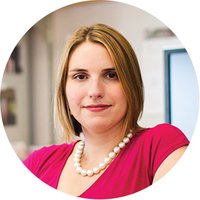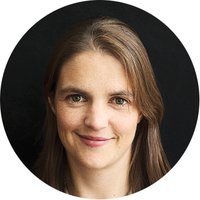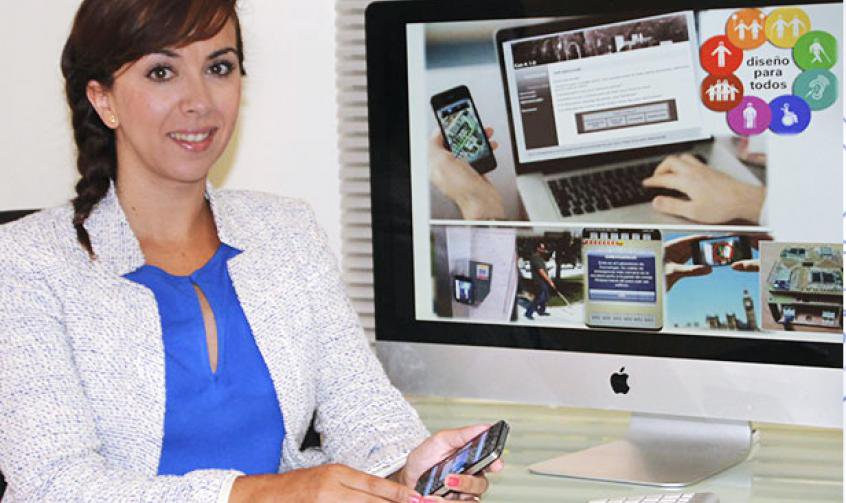"It happens that a research aimed at addressing the difficulties of physically challenged people, results in a product that proves useful to anybody. This is certainly the case of the application developed by Cristina Rodríguez within the “See with your hands,” project. A researcher with a PhD in Computer Science from the King Juan Carlos University in Madrid (URJC), Rodríguez developed a project to help visually or hearing impaired persons to find their way through the University campus, however this smartphone application has been praised so much that it has now been adopted by a travel agency to allow users to find points of interest in their itinerary.
The key is the adaptation to the user's needs so that the application provides a support for all. If the objective is to reach the nearest cafeteria, a visually impaired person will receive an audio description all along the route, whereas someone with hearing difficulties will be able to watch a video explaining in sign language. Furthermore, an elderly person with walking difficulties may have instructions on how to find the easiest route. And each user can add information that other users can use and update in their turn, without the need for pre-set itineraries. QR codes and other points of interest can also be added easily.
So, how can this work indoor, where the GPS system cannot be received? For the system to work, it needs a local infrastructure, easy to be deployed as it consists of Bluetooth beacons, QR codes, or NFC labels, which are fixed to the doors, walls, or floor of the building, and interact with the application on the smartphone. Depending on the capabilities of the smartphone, the best navigation technology is automatically selected.
Thinking long-term, Rodríguez's goal is that this type of navigation-enabling infrastructure becomes a legal requirement for all public buildings. If finding a cafeteria may have alternatives, finding a safety exit quickly is certainly a priority and a life-saving need. Guiding physically impaired persons through an emergency situation was actually one of the key social objectives of the project, which received the support of the Vodafone Foundation. “Really, I would like this solution to be available not just at the University but everywhere” said a young user of the application, who is visually impaired. All the functionalities support the use of special readers like Talkback (for Android) and VoiceOver (for iOS) to assist those with physical disabilities.
To increase the application's outreach and usage, Rodríguez and her collaborators set up a dedicated web portal, called GAT-A, which generates tourist maps adapted to the user's interests and needs in few seconds, through the download of the relative Android, iOS, Nokia or Blackberry application. Showing that navigating in an unknown environment is not easy for anybody and by creating our own map, we can certainly interact more effectively with the surrounding environment."




